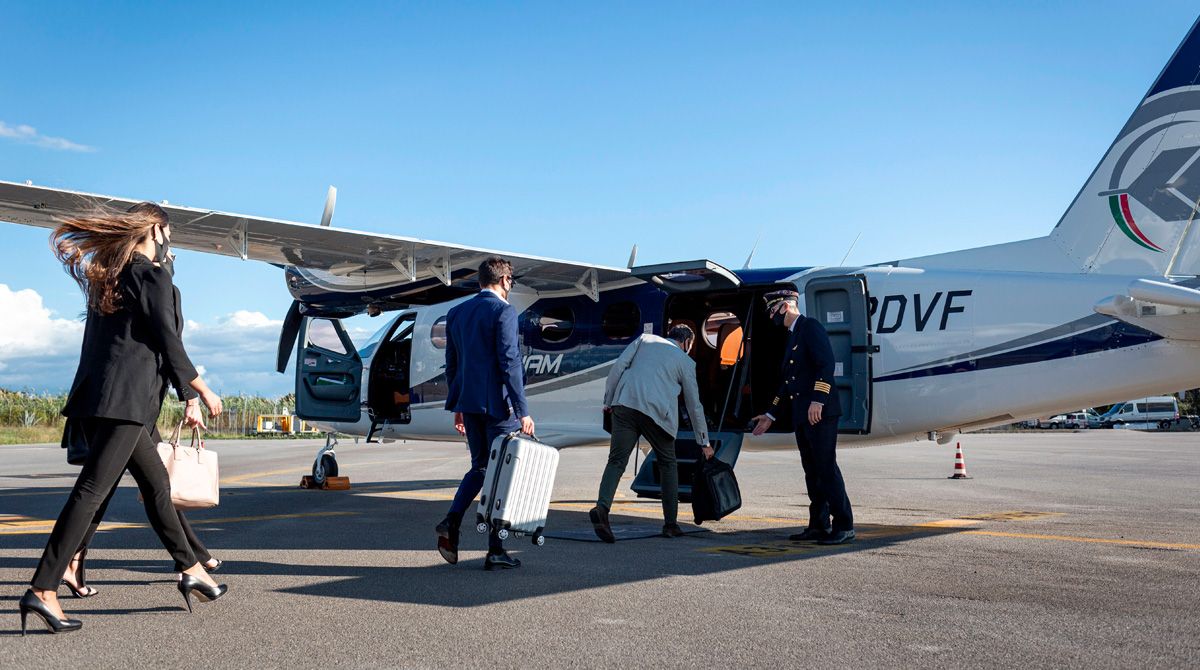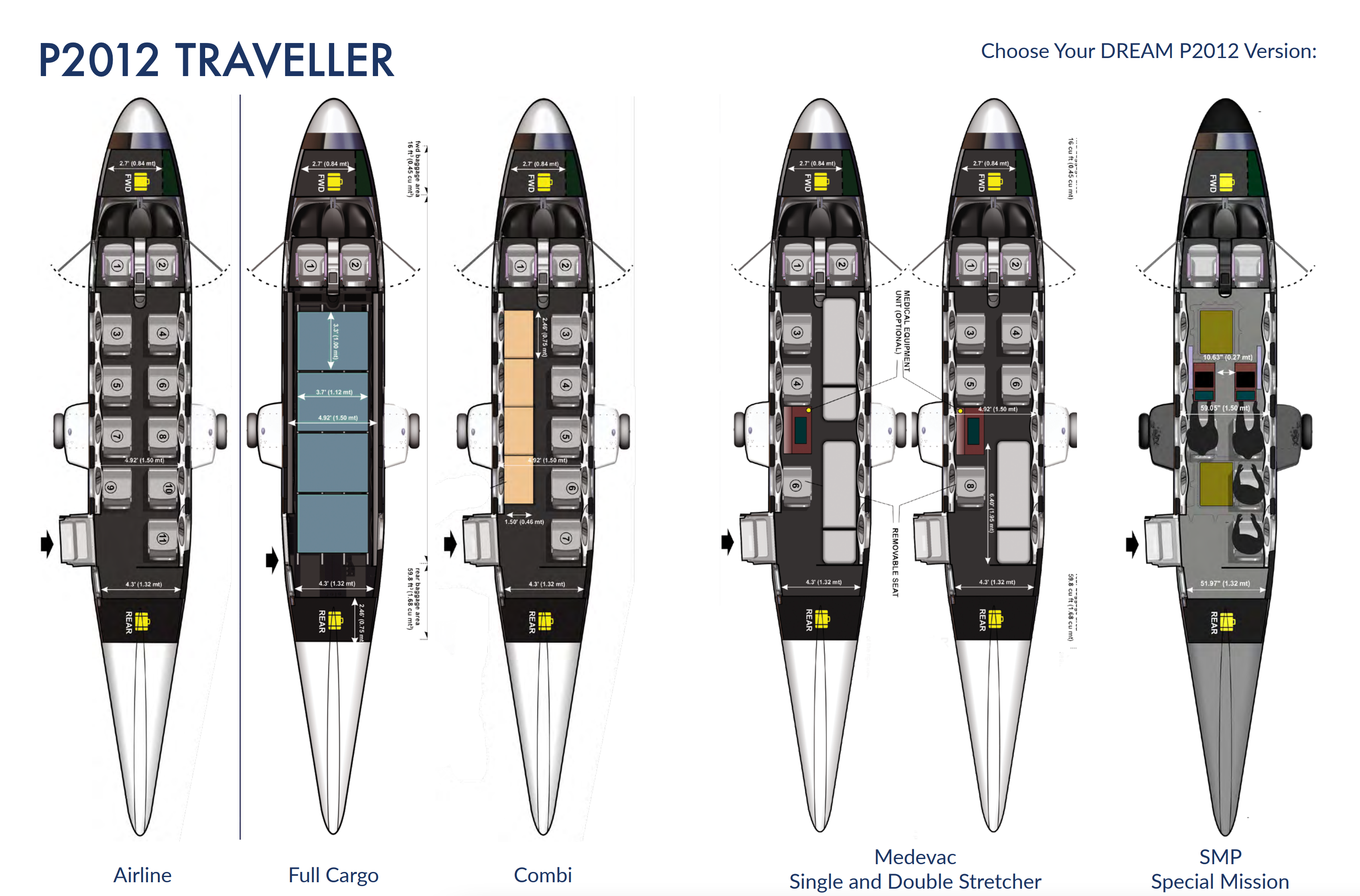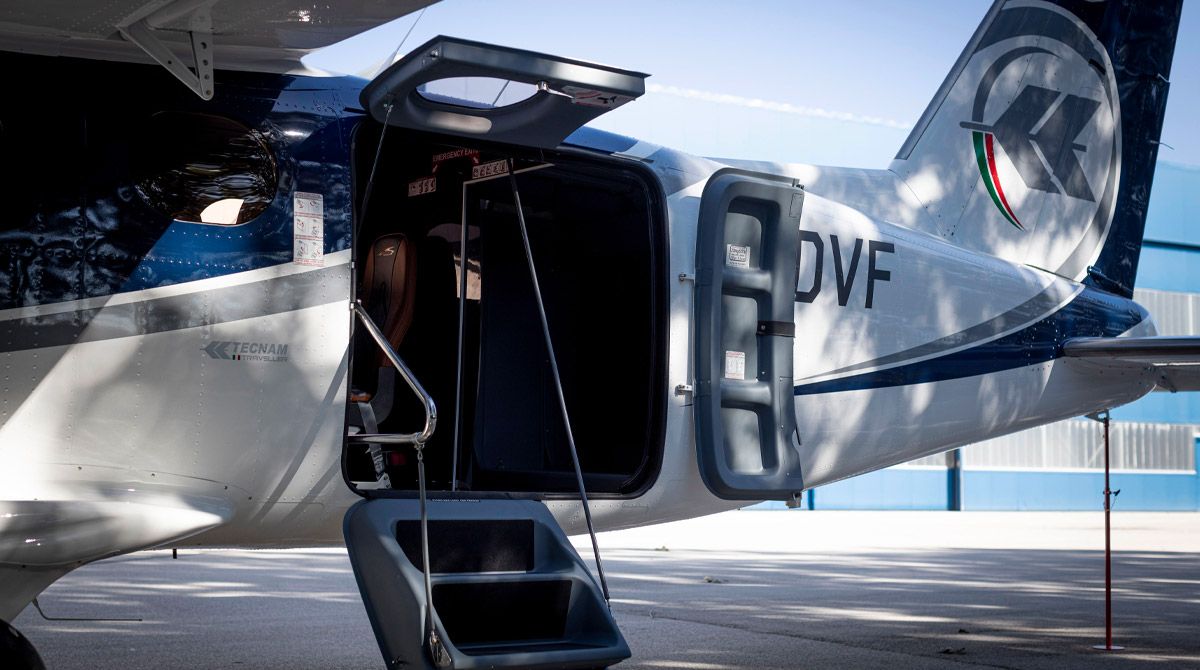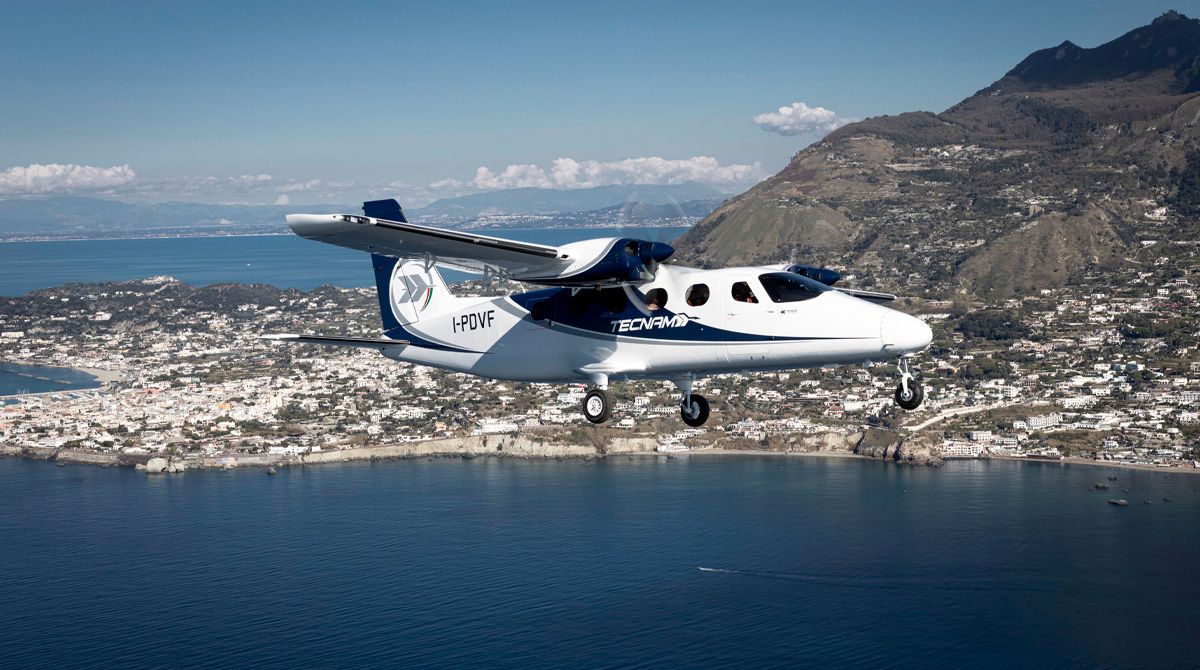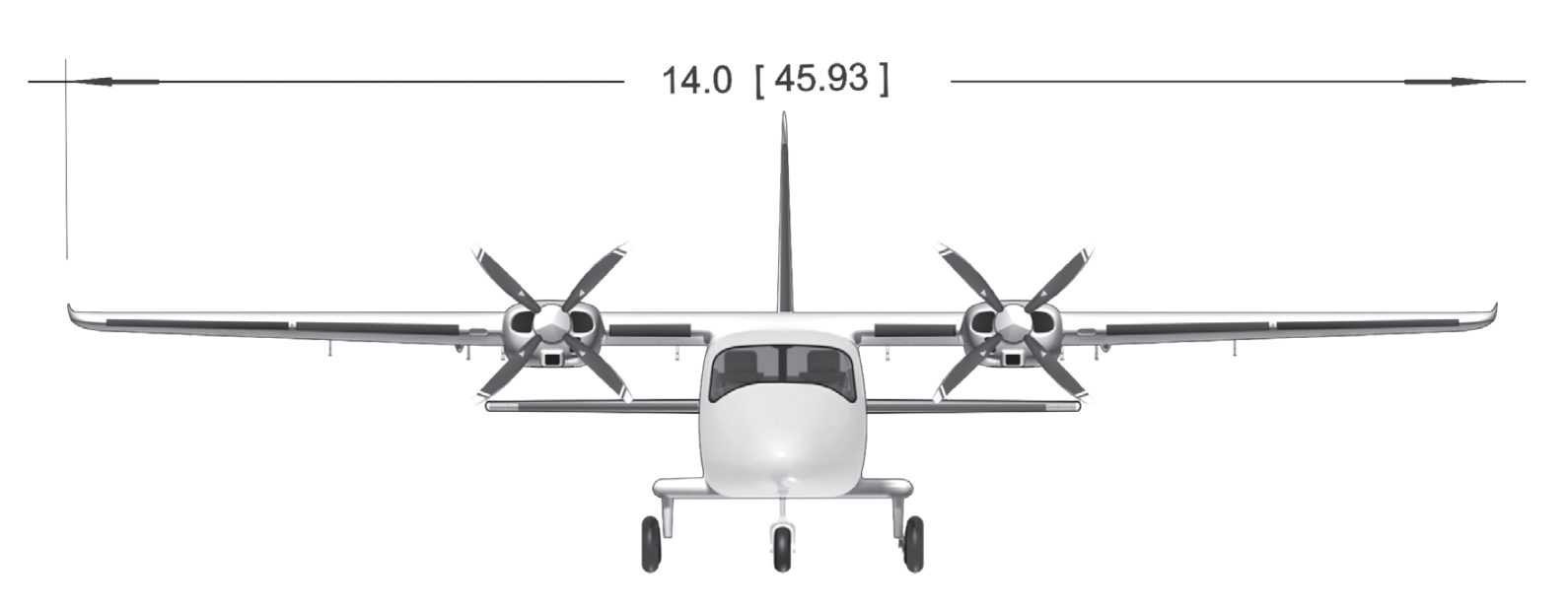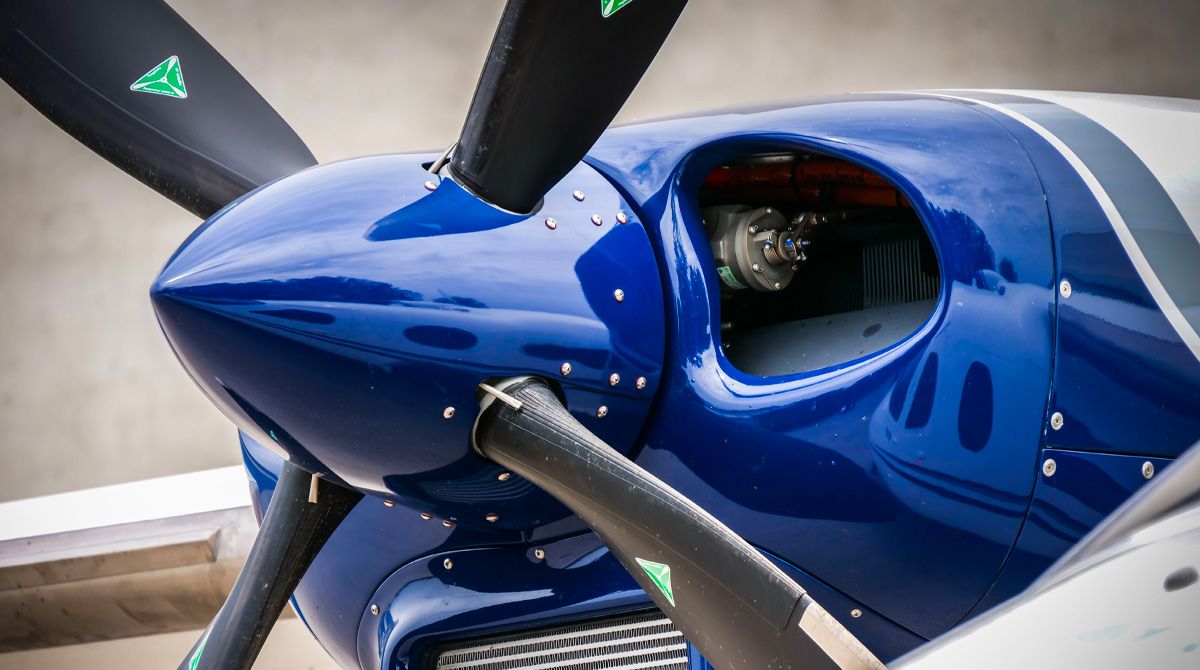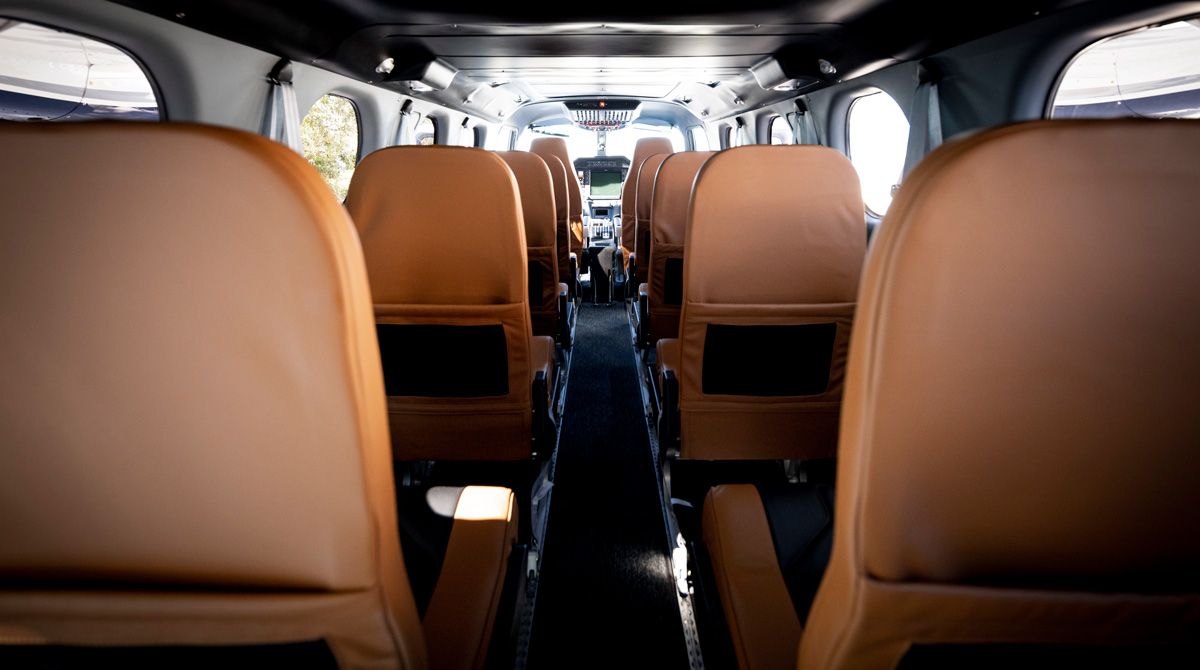Summary
- The Tecnam P2012 Traveller is a versatile piston twin aircraft suitable for various applications, including short-haul operations, medevac, VIP transport, parachuting, and cargo services.
- The aircraft is available in five different variants: airline, medevac, cargo, combi, and parachute configurations, making it easily convertible for different purposes.
- The P2012 Traveller is efficient and capable, with the ability to operate on both paved and unpaved runways, consuming around 50 gallons of fuel per hour, and accommodate a total of 11 people.
The Tecnam P2012 Traveller emerges as a versatile piston twin aircraft made for many applications – from short-haul operations and medical evacuation missions to VIP transport, parachuting, and cargo services.
Interestingly, the market for piston-powered twin-engine aircraft is marked by a limited number of models. The majority of aircraft in this category currently in operation are over 35 years old and no longer in production. This Italian aircraft has obtained certification from the FAA and the EASA as the most recent addition to the roster of piston twins approved for commercial service.
Key specifications
|
Pilots |
1 |
|---|---|
|
Passenger capacity |
9 |
|
First flight |
July 21, 2016 |
|
Entered into service |
February 22, 2020 |
|
Users |
Cape Air, Zil Air |
1 It is available in five variants
Airline – Medevac – Cargo – Combi – Parachute
Photo: Tecnam
The Tecnam P2012 Traveller can quickly and easily be converted from a passenger carrier into a special-purpose aircraft. The widely favored configuration is tailored for regional air travel, accommodating a maximum of nine passengers and two pilots.
The combi configuration serves both cargo and passenger transport needs, particularly in remote areas with short runways. Tecnam achieves this by replacing one row of seats with cargo pods, enabling a flexible mix of passengers and goods in the cabin. Another variant, the medevac, caters to global medical authorities, converting the P2012 Traveller into an air ambulance.
Image: Tecnam
The fourth option exclusively caters to cargo needs. In the cargo configuration, the P2012 can transport over one metric ton of cargo across four pallets within a five cubic meter volume, facilitated by a unique cargo door. Meanwhile, the fifth option is suitable for recreational needs and sports aviation.
2 It is incredibly efficient
Operational costs: $391.82 – $404.58 per flight hour
|
Performance statistics |
|
|
Takeoff run |
1,849 ft |
|
Takeoff distance |
2,596 ft |
|
Landing run |
1,198 ft |
|
Landing distance |
2,438 ft |
|
Max range |
950 NM |
|
Cruise speed |
173 kts |
|
Max cruise speed |
194 kts |
Photo: Tecnam
The P2012 Traveller is built to fly from big airports to remote airstrips, capable of operating on both paved and unpaved runways. It can take off and land in short distances – as little as 1,849 ft (564 m) and 1,198 ft (365 m), respectively. This aircraft can fly at cruise speeds up to 194 knots (359 km/h) and cover distances up to 950 nautical miles (1,760 km). Thanks to its turbocharged piston engines, the P2012 Traveller is fuel-efficient at any altitude, avoiding the high fuel consumption common in turboprops at lower levels.
According to a report by Twin & Turbine, the P2012 Traveller can fly at 10,000 feet with the engines set at 82%, reaching a speed of 180 knots and using 68 gallons of fuel per hour (257 liters). If the speed is reduced to 170 knots, the fuel consumption drops to 50 gallons per hour (189 liters). Using lower power settings further increases fuel efficiency.
3 A high-wing design adds to its versatility
Wingspan: 46 ft (14 m)
Photo: Tecnam
Many General Aviation (GA) aircraft have wings mounted high on the fuselage, offering stability with the center of mass beneath the center of lift. Although a high-wing design is not groundbreaking, it makes this piston aircraft exceptionally convenient for various applications.
Image: Tecnam
High-wing design contributes to shorter field landings, allows the fuselage interior to be free of additional structures, provides more flexible use of space, and offers increased ground clearance. More importantly, the high-wing design allows this aircraft to be used for parachuting.
4 Two engine options
Lycoming TEO-540 C1A | Continental GTSIO-520-S
Photo: Tecnam
In addition to its versatility, the customers of this piston aircraft can choose between two engine options. Having powered the P2012 exclusively with the Lycoming TEO-540 C1A engine for years, Tecnam introduced a second option, the GTSIO-520-S by Continental Aerospace Technologies, in mid-2023
Both engine options are rated for 375 Hp each, with the Continental coupled to a three-blade MT-Prop propeller and the Lycoming coupled to a four-blade MT-Prop propeller. Additionally, the Continental engines have slightly higher stall speeds and require a shorter runway for take-off and landing.
|
Take-off distance |
Landing distance |
|
|
Lycoming |
2,596 ft (791 m) |
2,438 ft (743 m) |
|
Continental |
2,237 ft (682 m) |
1,936 ft (590 m) |
5 The cabin is spacious for such a small aircraft
Cabin volume: 314.3 ft³ (8.9 m³)
Photo: Tecnam
The P2012 Traveller features a relatively spacious cabin for its class. With a seating capacity for 11 passengers, the aircraft measures 39.1 ft in length (11.9 m), stands at a height of 14.4 ft (4.4 m), and boasts a wingspan of 46 ft (14 m). In the passenger variant, the P2012 Traveller includes a 60 ft³ (1.7 m³) luggage compartment and a 14.13 ft³ (0.4 m³) front cargo hold to accommodate passengers’ luggage allowances. In addition, the P2012 Traveller has large windows, expansive cabin doors, and two pilot doors.
What are your thoughts on the Tecnam piston aircraft? Have you ever flown on this Italian-manufactured aircraft? Let us know in the comments section below.
Sources: Tecnam, Twin & Turbine


